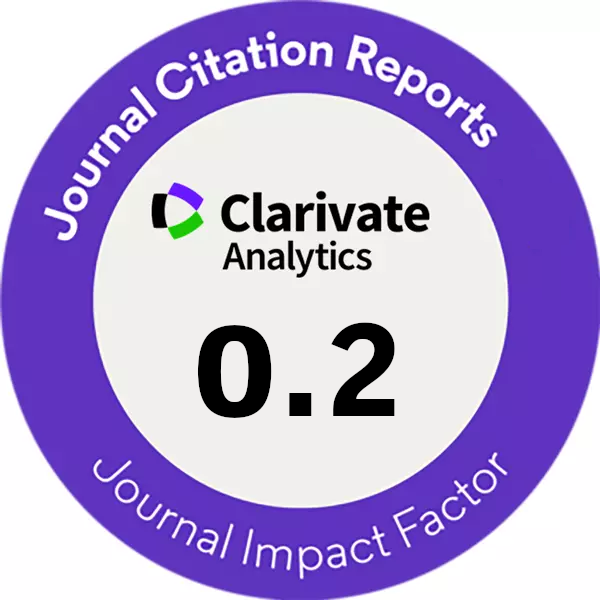NANOTECHNOLOGY IN THE CULTURAL HERITAGE - INFLUENCE OF NANOSPENSIONS ADOPTED BY NANOPARTICLES OF TiO2 FOR CLEANING THE SURFACE OF HISTORICAL PLASTERS
DOI:
https://doi.org/10.14311/CEJ.2017.03.0019Keywords:
Calcium hydroxide, TiO2, fotocatalysis, nanosuspension, cleaning, antimicrobialAbstract
The continuous development of nanostructure and the study of physico - chemical processes
in the nanometer range lead to new methods that can slow down the degradation processes of a
work of art, or even restore damage caused, for example, by an inappropriate restoration process.
The use of nanosuspensions based on calcium hydroxide is probably the most widespread
application of nanomaterials in heritage care, especially in the field of hardening of lime building
materials (plaster, limestone, etc.). In combination with titanium dioxide, it should be a successful
suspension in the fight against biological agents, surface contamination or in the protection of UVresistant
building materials.
Downloads
References
Stonecore, In. Sborník semináře Nanomateriály v památkové péči, STOP, str. 32 – 36
Rathouský, J., 2012. Nanovápno pro konsolidaci porézních materiálů – principy, mechanismy, In.
Sborník semináře Nanomateriály v památkové péči, STOP,str. 28 – 31
Škrdlantová, M. et al. 2012. Laboratorní použití micelárních roztoků a mikroemulzí při čištění
historických materiálů. In. Sborník semináře Nanomateriály v památkové péči, STOP, str. 18 – 22
Baglioni, P. et al. 2012. Nano-Materials for the Conservation and Preservation of Movable and
Immovable Artworks, Progress in Cultural Heritage Preservation – EUROMED 2012, dostupné online:
https://www.researchgate.net/publication/270365605_Nano-
Materials_for_the_Conservation_and_Preservation_of_Movable_and_Immovable_Artworks
Poggi, G. et al. 2010. Hydroxide Nanoparticles for Deacidification and Concomitant Inhibition of Iron-
Gall Ink Corrosion of Paper, Langmuir, 26 (24), pp 19084–19090
Kwitkowska, A. et al. 2014. A.Paper deacidification with the use of magnesium oxide nanoparticles,
Forestry and Wood Technology № 85, p.144-148, dostupné online:
http://agro.icm.edu.pl/agro/element/bwmeta1.element.agro-4b9d7961-05a7-43ed-9339-
f4ba9365a/c/144_Annals85.pdf
Giorgi, R.et al. 2002. Nanotechnologies for Conservation of Cultural Heritage: Paper and Canvas
Deacidification, Langmuir, 18 (21), pp 8198–8203
Graziani, L.et al, 2014. Durability of self-cleaning TiO2 coatings on fired clay brick facades: Effect of
UV exposure and wet &dry cycles, Building and Enviroment, 2014, Vol.71,p.193-203 Dostupný online:
http://www.sciencedirect.com/science/article/pii/S0360132313002904.
Quagliarini, E. et al. 2012. Smart surfaces for architectural heritage: Preliminary results about the
application of TiO2 based coating on travertine, Journal of Cultural Heritage, Vol.13, p.204-209
Quagliarini, E. et al. 2013. Self-cleaning materials on Architectural Heritage: Kompatibility of photoinduced
hydrophibilicity of TiO2 coatingy on stone surfaces, Journal of Cultural Heritage, Vol.14, p.1-7
Gavenda, M. et al. 2005. Consolidación y restauración de revocos esgrafiados en la iglesia
parroquial de Nuestra Señora de la Asunción de Traiguera, Loggia Restauration, Ano VIII, No.18, p.64-69
Liu, T.et al. 2010. Structure stability and corrosion resistance of nano-TiO2 coatings on aluminum in
seawater by a vacuum dip-coating method, Surface and Coatings Technology, Volume 205, Issue 7, p.
–2339
De Filpo, G. et al. 2013. Preventing fungal growth in wood by titanium dioxide nanoparticles,
INTERNATIONAL BIODETERIORATION & BIODEGRADATION, vol. 85 pp. 217–222
Pinho, L. et al. 2013. A novel TiO2–SiO2 nanocomposite converts a very friable stone into a selfcleaning
building material. Applied Surface Science [online]. Vol. 275, s. 389-396 [cit. 2013-11-14]. DOI:
1016/j.apsusc.2012.10.142. ISSN 0169-4332. Dostupný online:
http://www.sciencedirect.com/science/article/pii/S0169433212018831.
Gomez-Ortiz, N. et al. 2013. Antifungal Coatings Based on Ca(OH)(2) Mixed with ZnO/TiO2
Nanomaterials for Protection of Limestone Monuments, ACS APPLIED MATERIALS & INTERFACES Vol. 5
Iss. 5 Pp. 1556-1565
Revuru, A. N. et al.: Photo Catalytic Activity of Anatase TiO2/PVA Film Coated Plate. In: Advanced
Materials Research, 584, 396 (2012).
Allen, G. C. et al.2002. Photocatalytic oxidation of NOx gases using TiO2: a surface spectroscopic
approach. In: Environmental Pollution 120, pp. 415–422.
Wang, H. et al. 2013. Multifunctional nanocomposites for paper conservation, STUDIES IN
CONSERVATION Volume: 58 Issue: 1 Pages: 23-29
Fujishima, A. 2005. Discovery and applications of photocatalysis – Creating a comfortable future by
making use of light energy. In: Japan Nanonet Bulletin, 44th Issue
Hashimoto, K. et al. A. TiO2 Photocatalysis: A Historical Overview and Future Prospects, Japanese
journal of applied physics, vol. 44, No. 12, p. 8269 – 8285, dostupné online:
https://www.jsap.or.jp/jsapi/Pdf/Number14/04_JJAP-IRP.pdf
Bílý, P. et al. Experimentální studie vlivu nanomateriálů na fotokatalytické vlastnosti betonu,
dostupné online: http://stavba.tzb-info.cz/beton-malty-omitky/14178-experimentalni-studie-vlivunanomaterialu-
na-fotokatalyticke-vlastnosti-betonu
Hochmannová, L. et al. 2010. Vliv nanočástic TiO2 a ZnO na fotokatalytické a mikrobiální činky
silikátových nátěrů, Chem. Listy 104, 940-944
Kroftová K., et al. 2017. Synthesis nanolime susepnsions and their potential use in cultural heritage
preservation, konference EASEC-15, October 11-13, Xi´an, China
Downloads
Published
Issue
Section
License
Copyright (c) 2023 Author

This work is licensed under a Creative Commons Attribution-NonCommercial 4.0 International License.
Authors who publish with this journal agree to the following terms:
- Authors retain copyright and grant the journal right of first publication with the work simultaneously licensed under a Creative Commons Attribution License that allows others to share the work with an acknowledgement of the work's authorship and initial publication in this journal.
- Authors are able to enter into separate, additional contractual arrangements for the non-exclusive distribution of the journal's published version of the work (e.g., post it to an institutional repository or publish it in a book), with an acknowledgement of its initial publication in this journal.
- Authors are permitted and encouraged to post their work online (e.g., in institutional repositories or on their website) prior to and during the submission process, as it can lead to productive exchanges, as well as earlier and greater citation of published work (See The Effect of Open Access).










